How to Connect SMSAPI as Data Destination
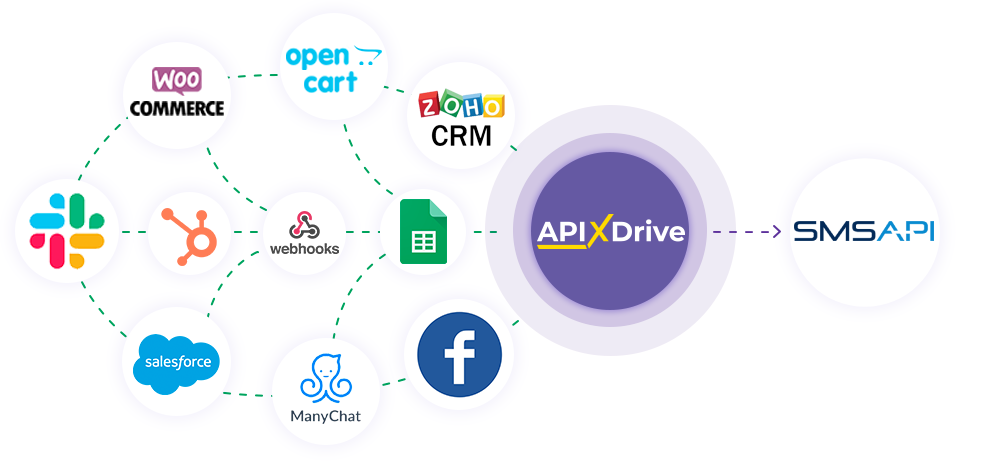
The integration will allow you to send messages to SMSAPI in response to any action in other systems. For example, if a new row appears in Google Sheets, a CRM order moves to another stage of the funnel, or when a new order appears on your website. This will allow you to efficiently automate workflows and save a lot of time.
Let's go through the entire SMSAPI setup steps together!
Navigation:
1. What will integration with SMSAPI do?
2. How to connect an SMSAPI account to ApiX-Drive?
3. How to configure data transfer to SMSAPI in the selected action?
4. Example of data that will be sent to your SMSAPI.
5. Auto-update and update interval.
After setting up the Data Source system, such as Google Sheets, you can start setting up the SMSAPI Data Destination.
To do this, click "Start configuring Data Destination".
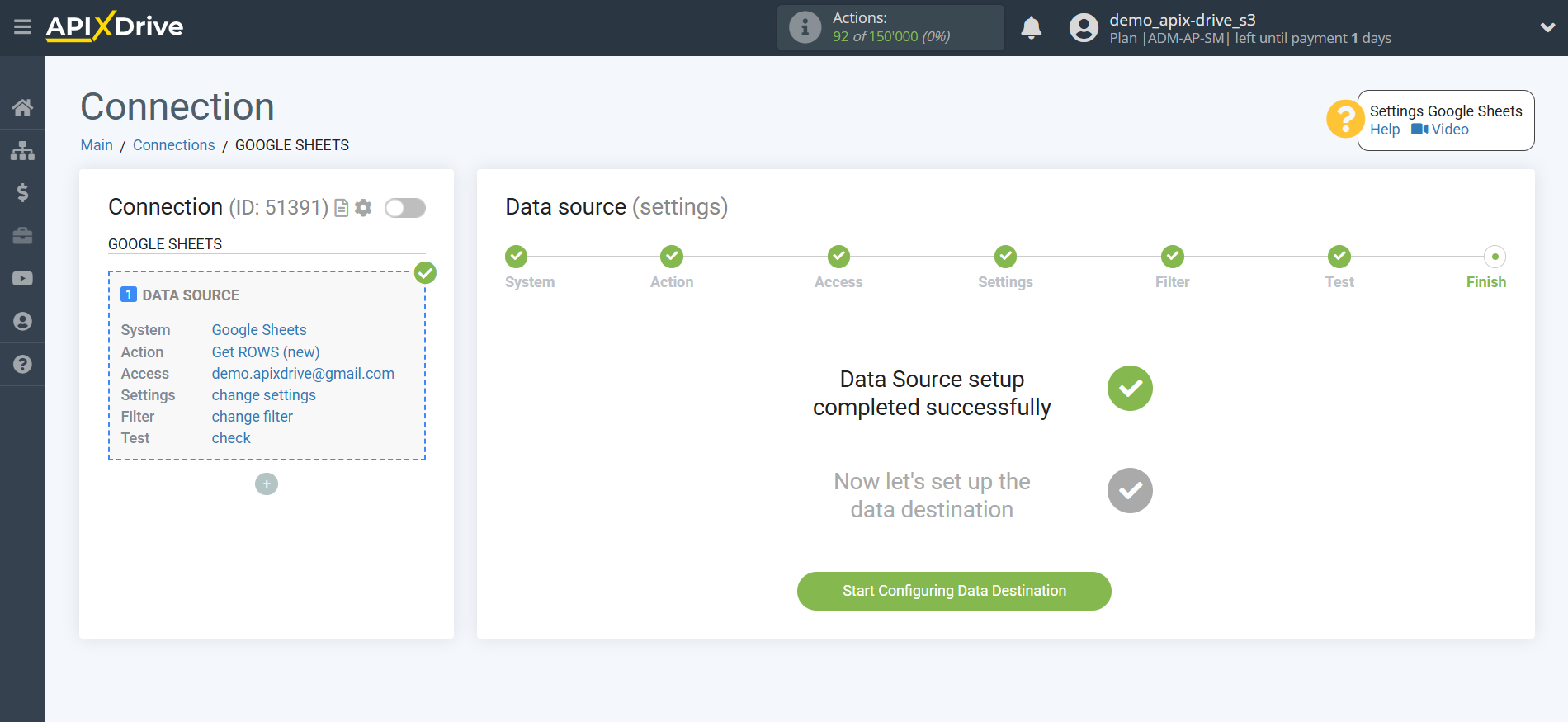
Select the Data Destination system. In this case, you must specify SMSAPI.
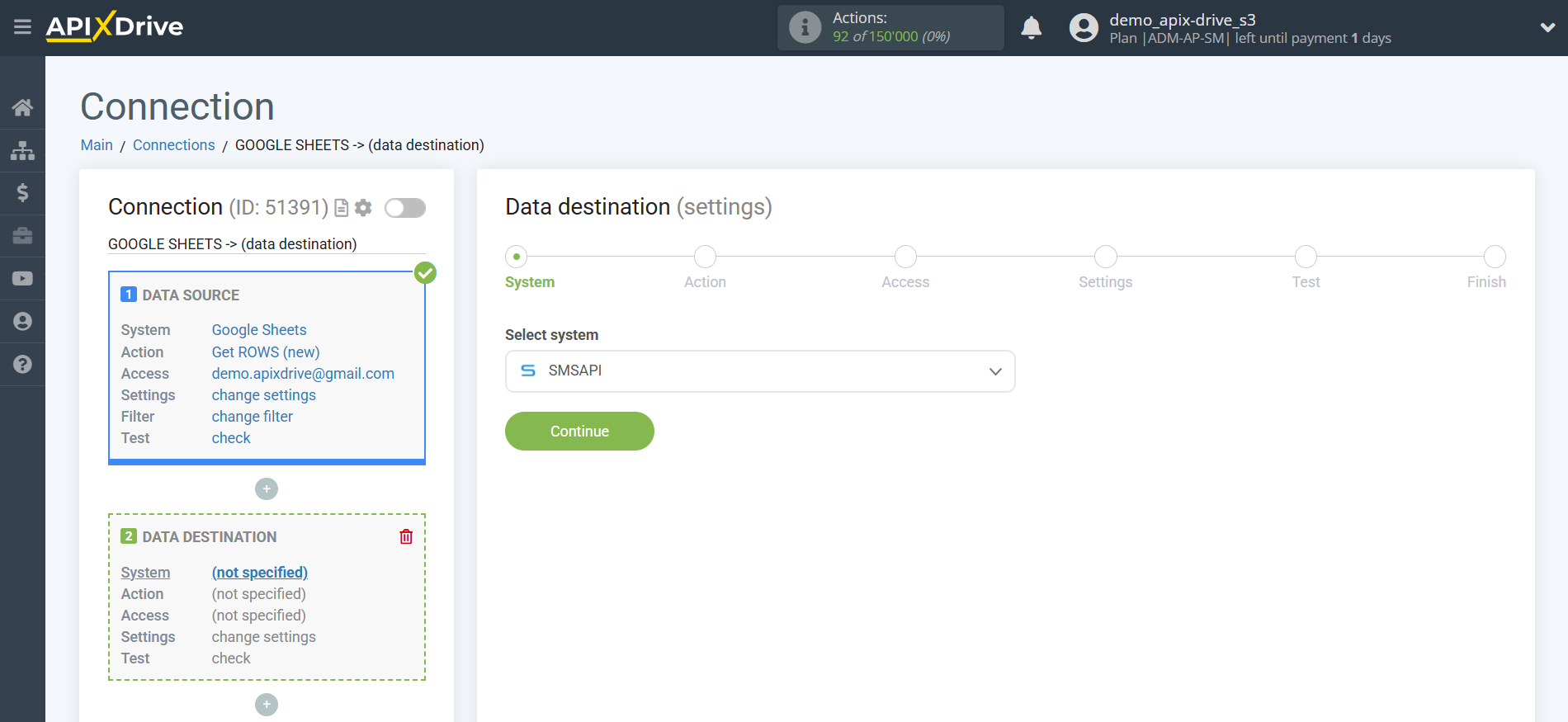
Next, you need to specify the action "Send SMS".
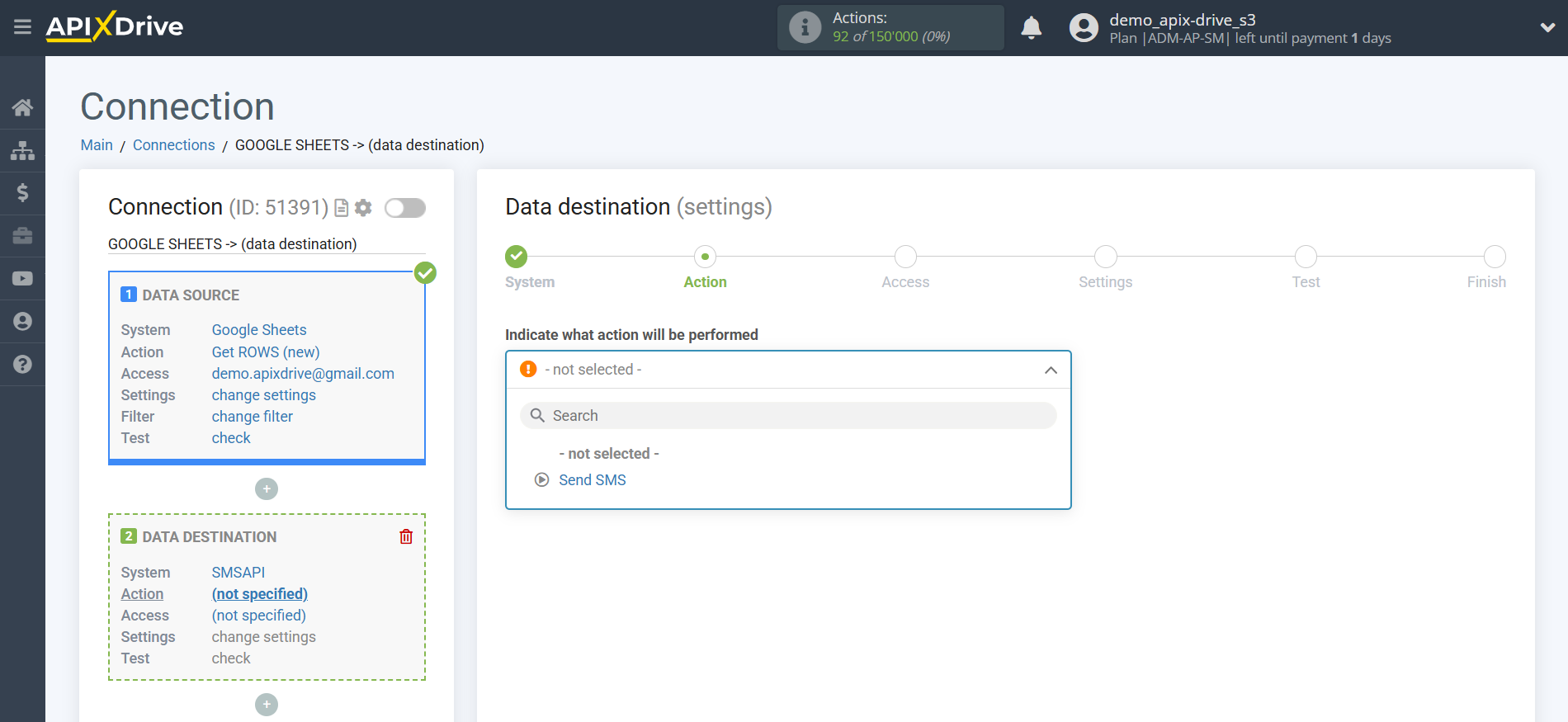
The next step is to select the SMSAPI account to send from.
If there are no accounts connected to the ApiX-Drive system, click "Connect account".
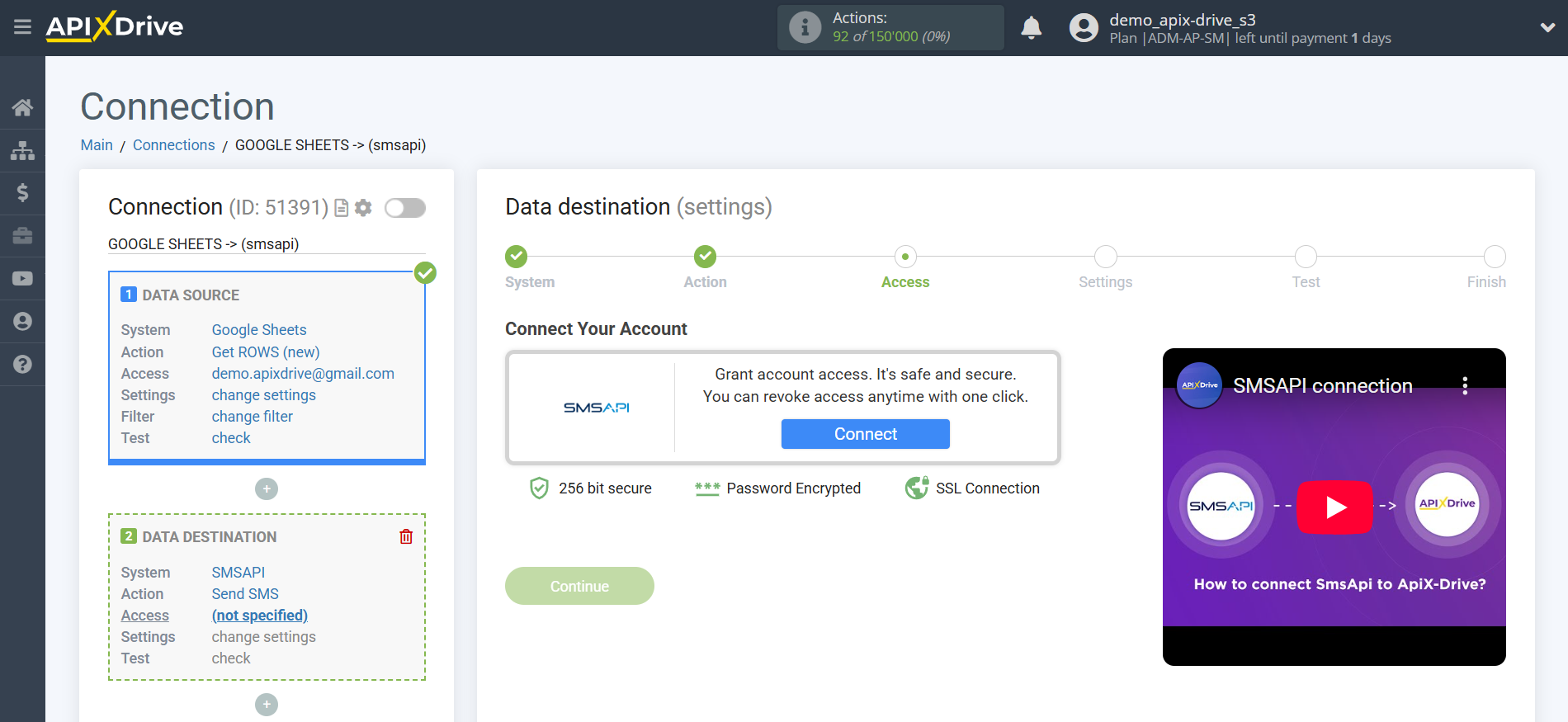
In the window that opens, you must fill in the "API Key" field.
To do this, let's go to your SMSAPI personal account.
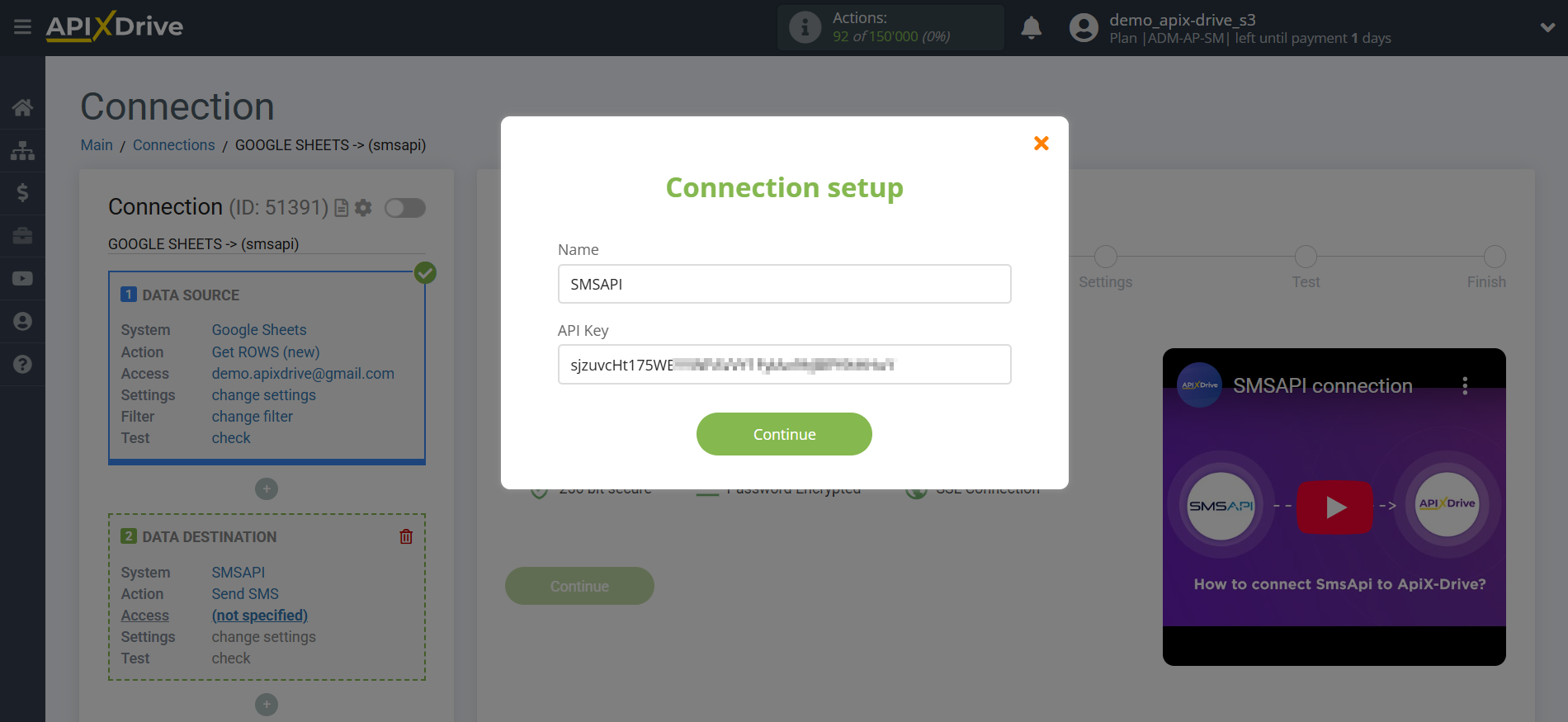
On the left menu, go to the "API settings" section and go to the "API tokens(OAuth)" section.
Next, if there is no API key created, click the "Generate a token" button and create an API key.
After that, copy the API key and paste it into the appropriate field in the ApiX-Drive system.
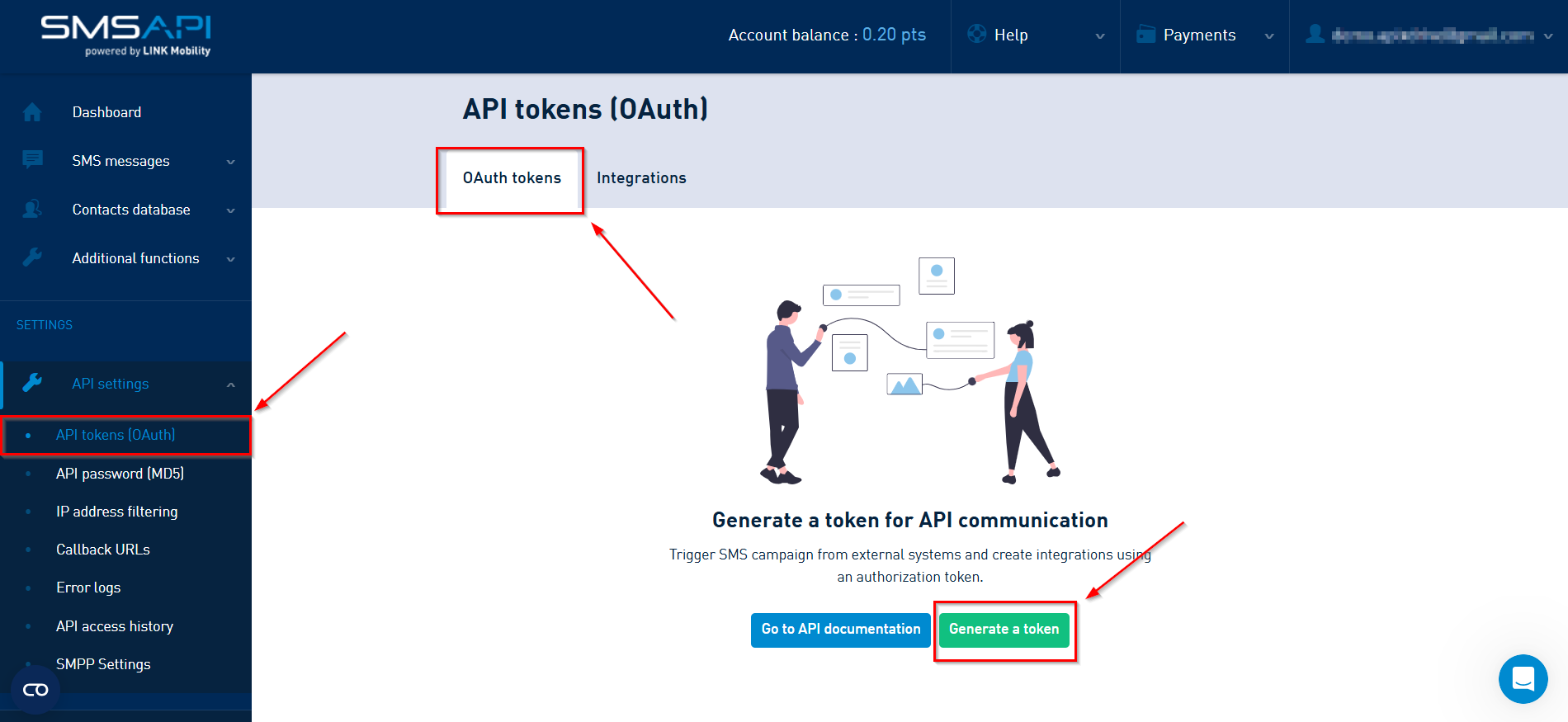
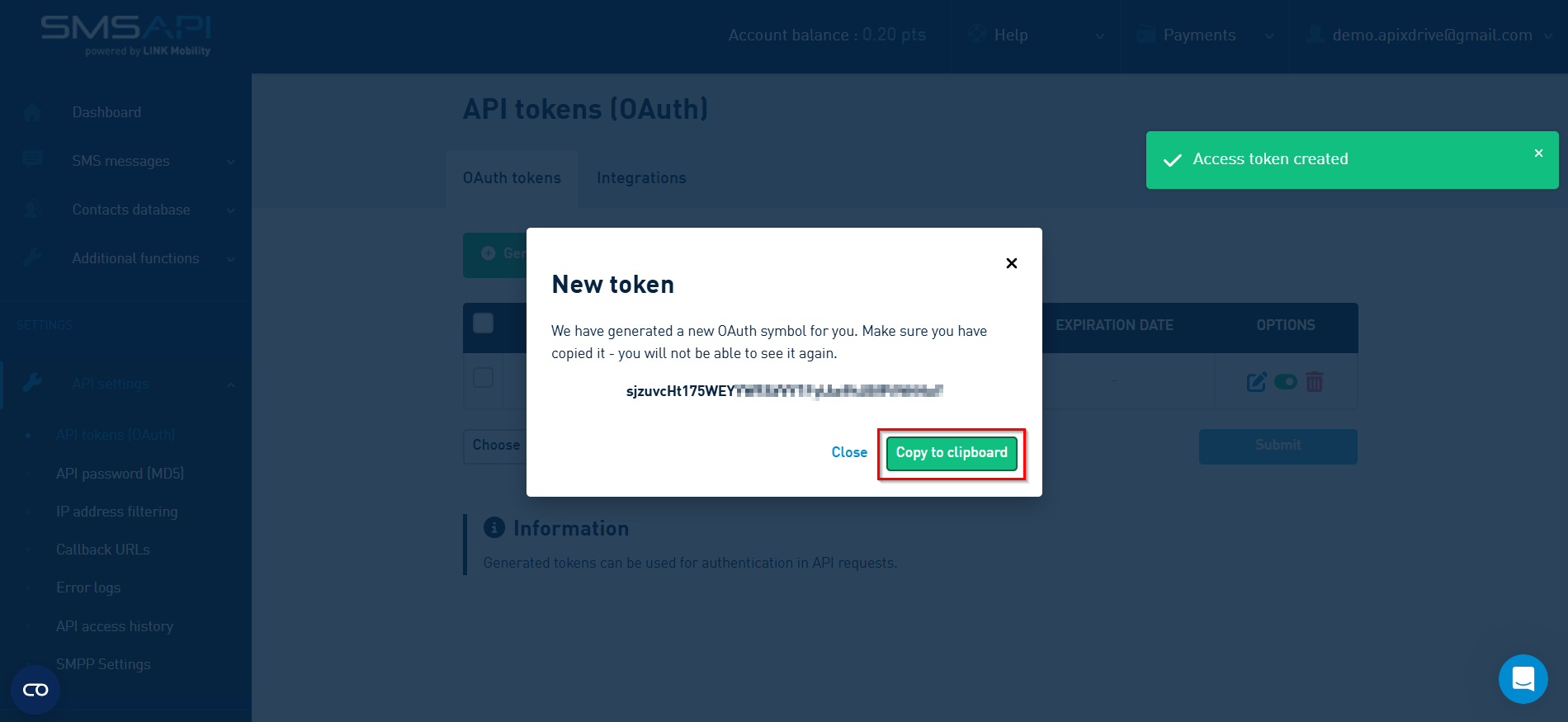
When the connected account appears in the list of active accounts, select it for further work.
Attention! If your account is on the list of "inactive accounts", check your access to this login!
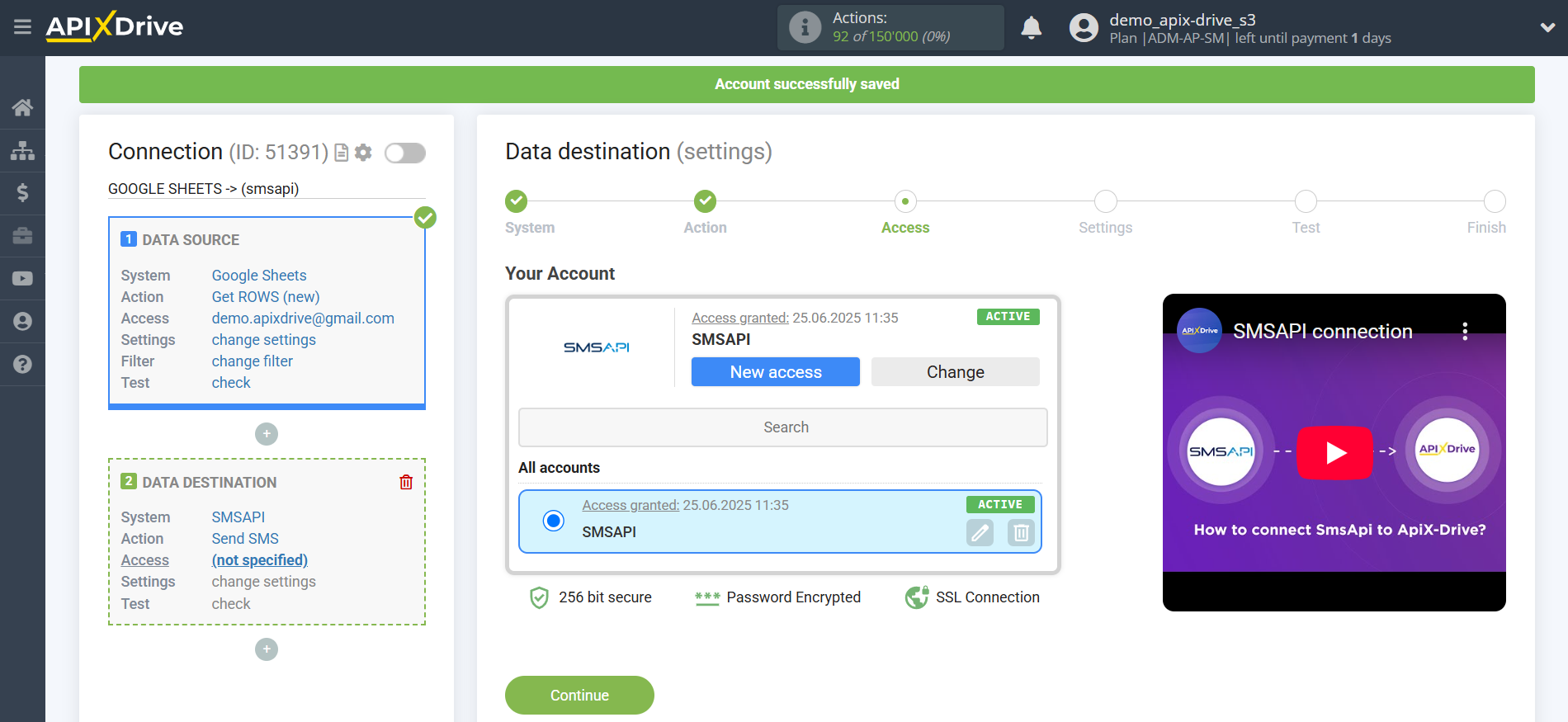
Now you need to specify the field where the recipient's phone number will be taken from.
You also need to specify the sender's alpha name that you have registered in the SMSAPI service.
In the Message field, you can use both system variables, such as time, date, year, month, day, and variables from the data source system, in this case Google Sheets.
You can combine these variables in any way you like. For example, take the name from one column, then put a comma, and then specify the main text of the message from another column, as in the example.
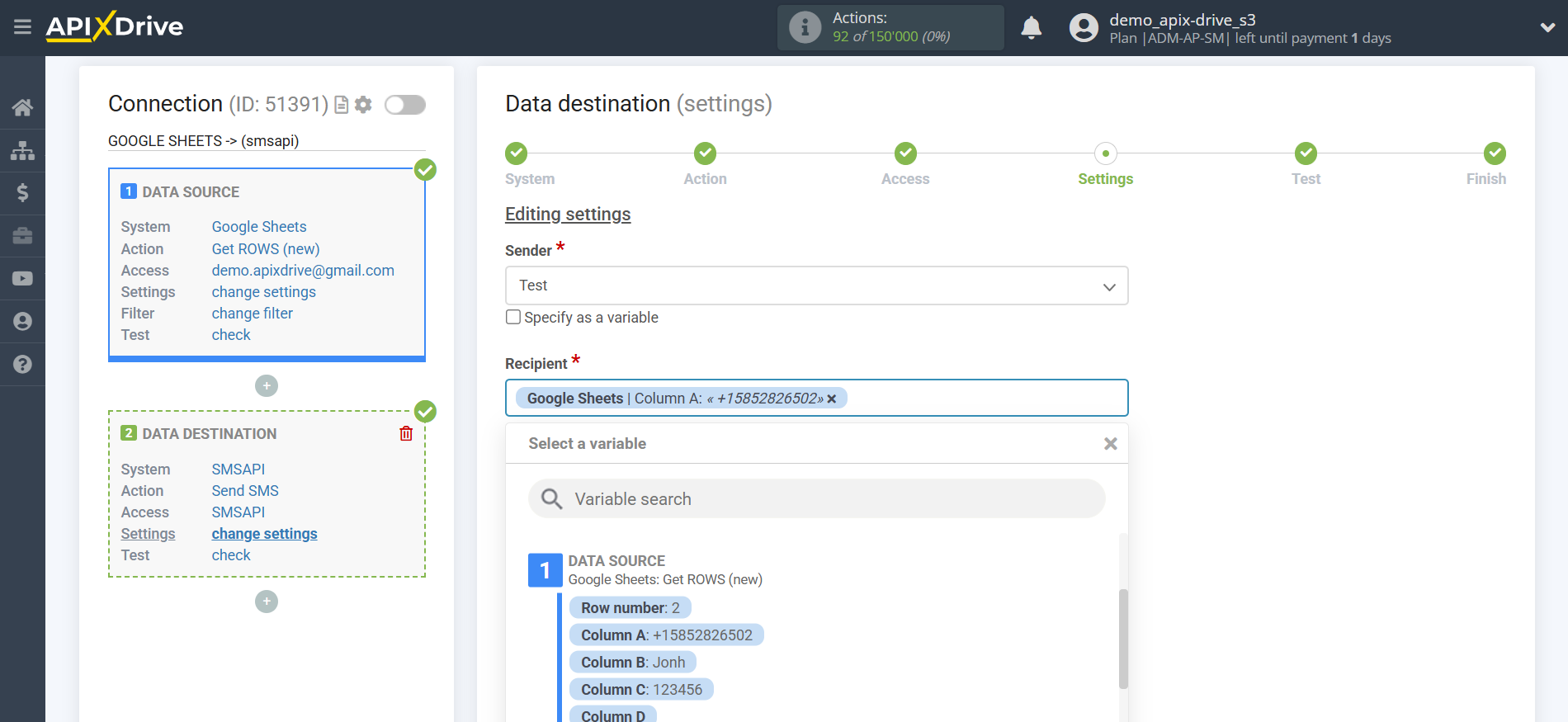
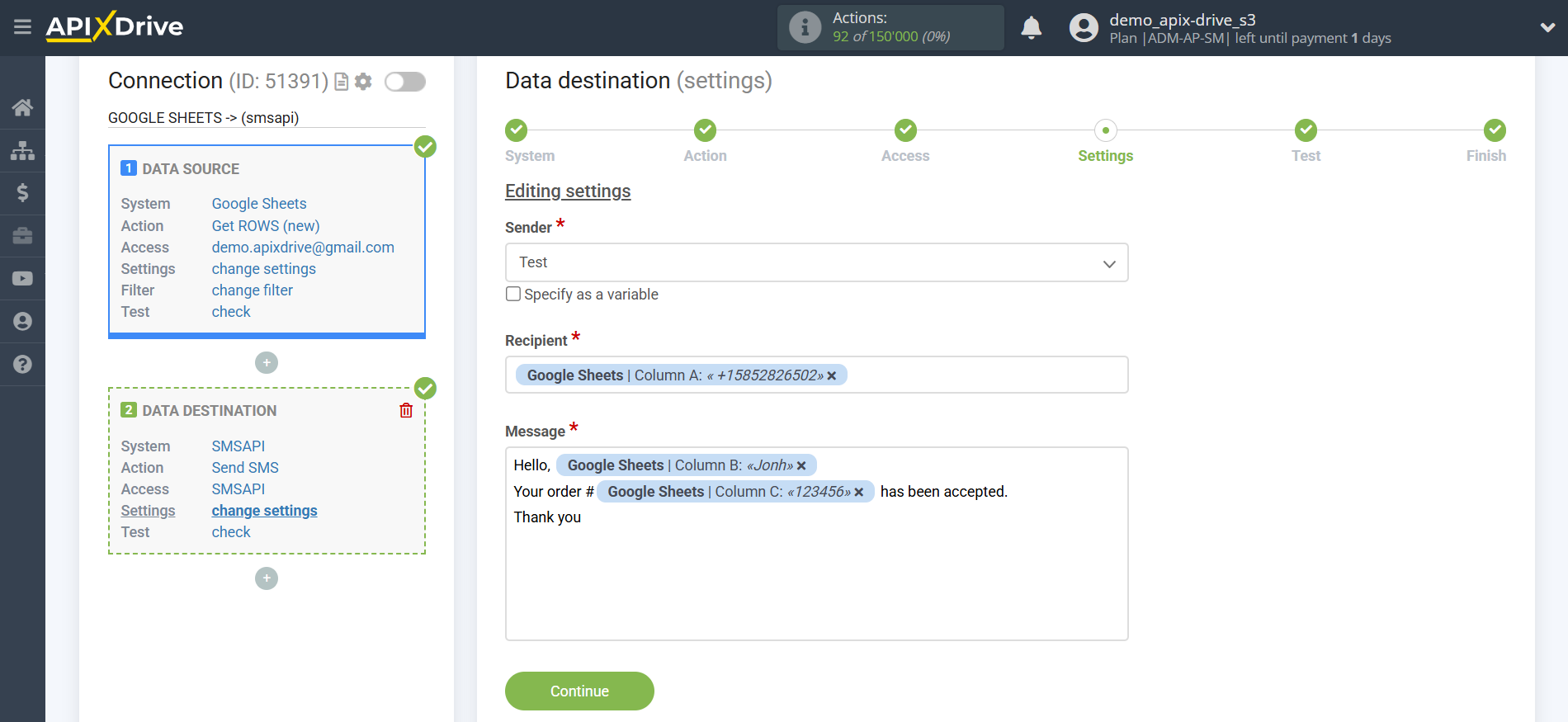
Now you can see what the future SMS message will look like, according to the selected data.
Click "Send test data to SMSAPI" and an SMS message will be sent to the phone number specified in the test data.
If you are not satisfied with something, click "Edit" and go back one step.
If everything suits you, click "Continue" to continue the setup.
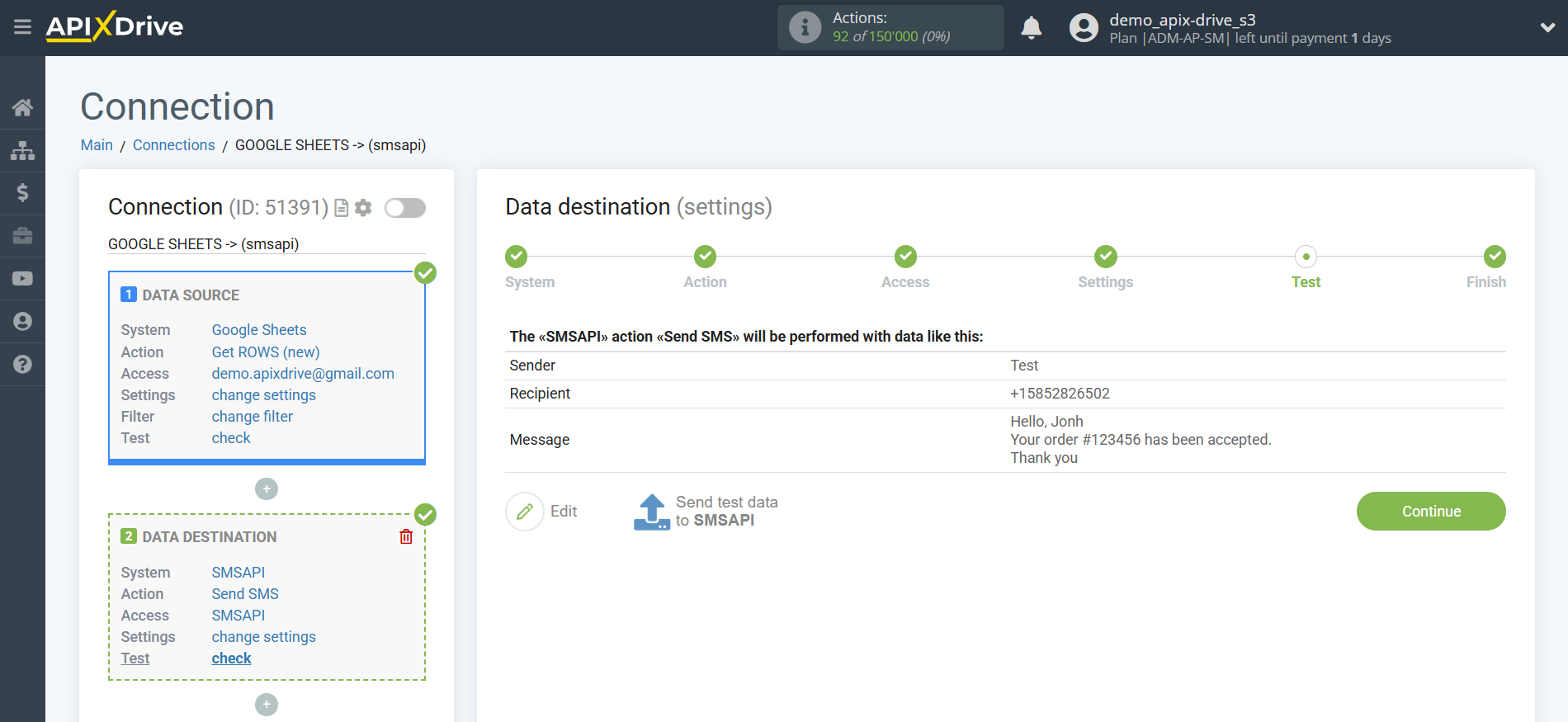
This completes the Data Destination setup!
Now you can start choosing the update interval and enabling auto-update.
To do this, click "Enable update".
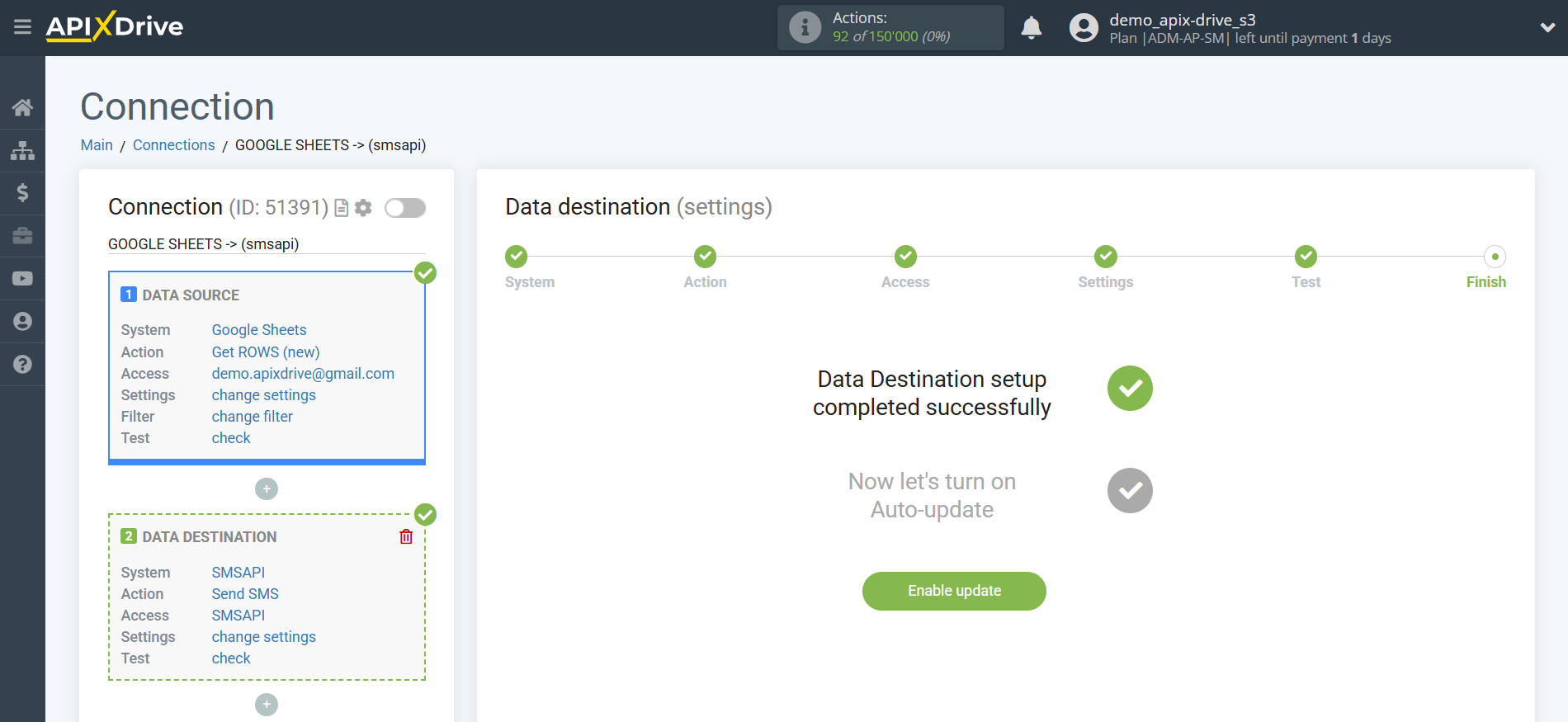
On the main screen, click on the gear icon to select the required update interval or setup scheduled launch. To start the connection by time, select scheduled start and specify the desired time for the connection update will be started, or add several options at once when you need the connection will be started.
Attention! For Scheduled Start to work at the specified time, the interval between the current time and the specified time must be more than 5 minutes. For example, you select the time 12:10 and the current time 12:08 - in this case, the connection auto-update will occur at 12:10 the next day. If you select the time 12:20 and the current time 12:13 - the connection auto-update will work today and every day thereafter at 12:20.
To make the current connection transmit data only after another connection, check the box "Update connection only after start other connection" and specify the connection after which the current connection will be started.
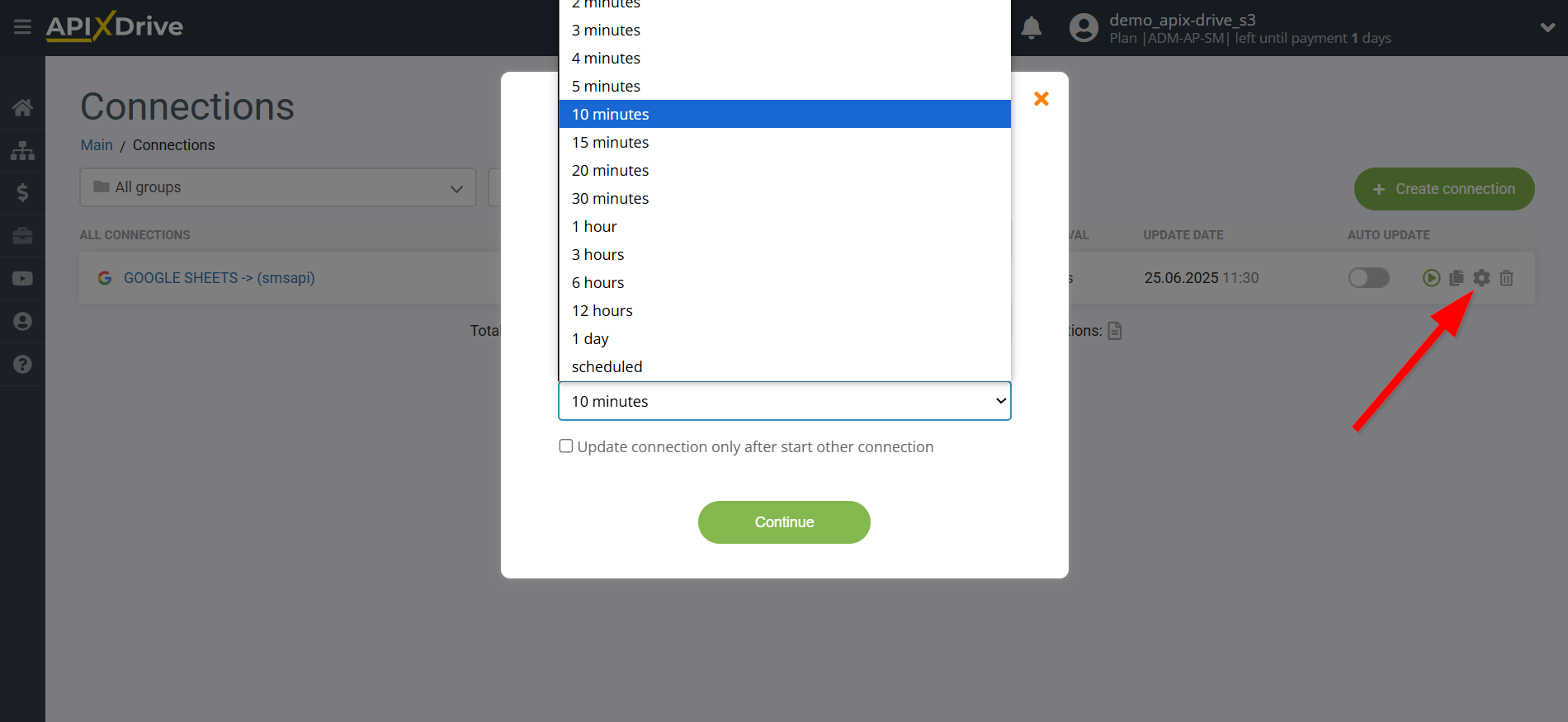
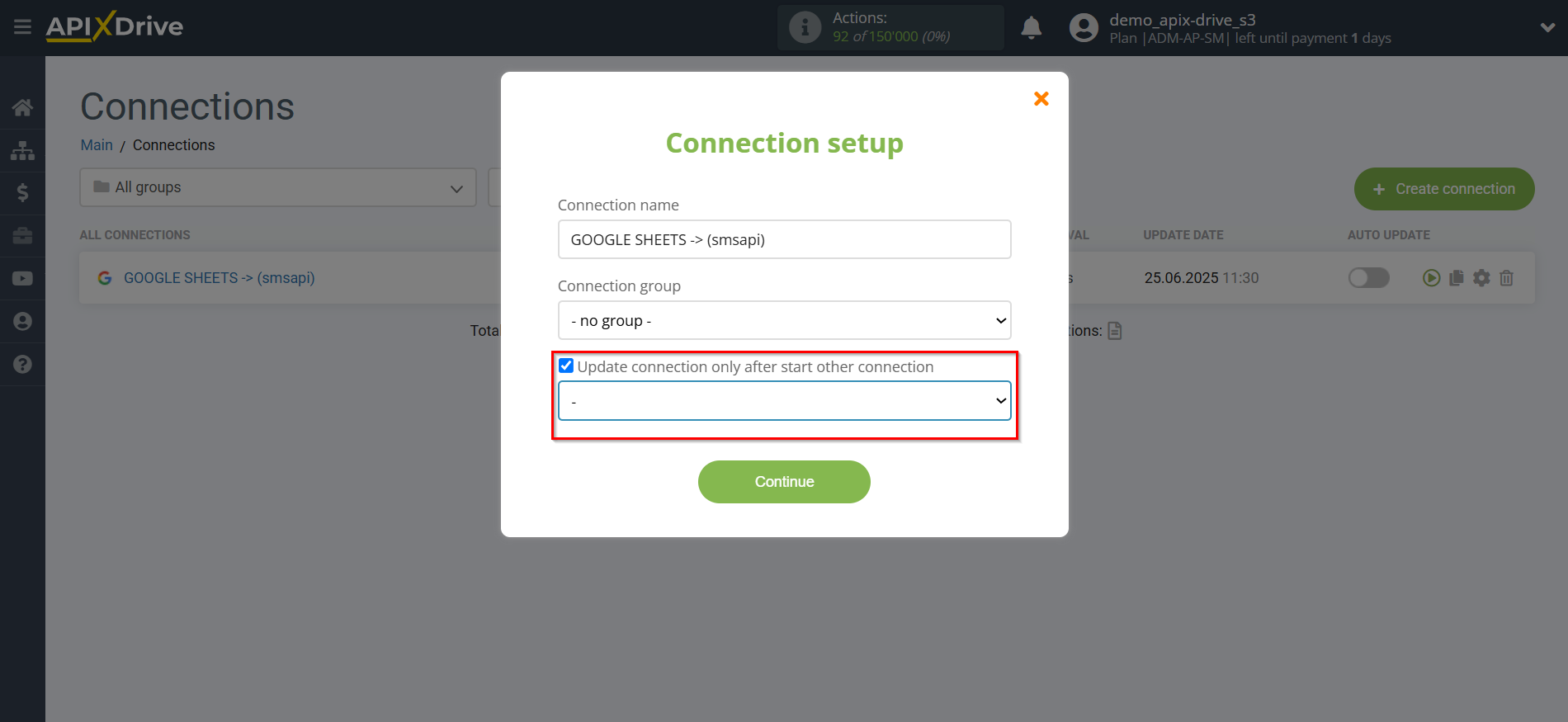
To enable auto-update, move the slider to the position as shown in the picture.
To perform a one-time data transfer, click on the arrow icon.
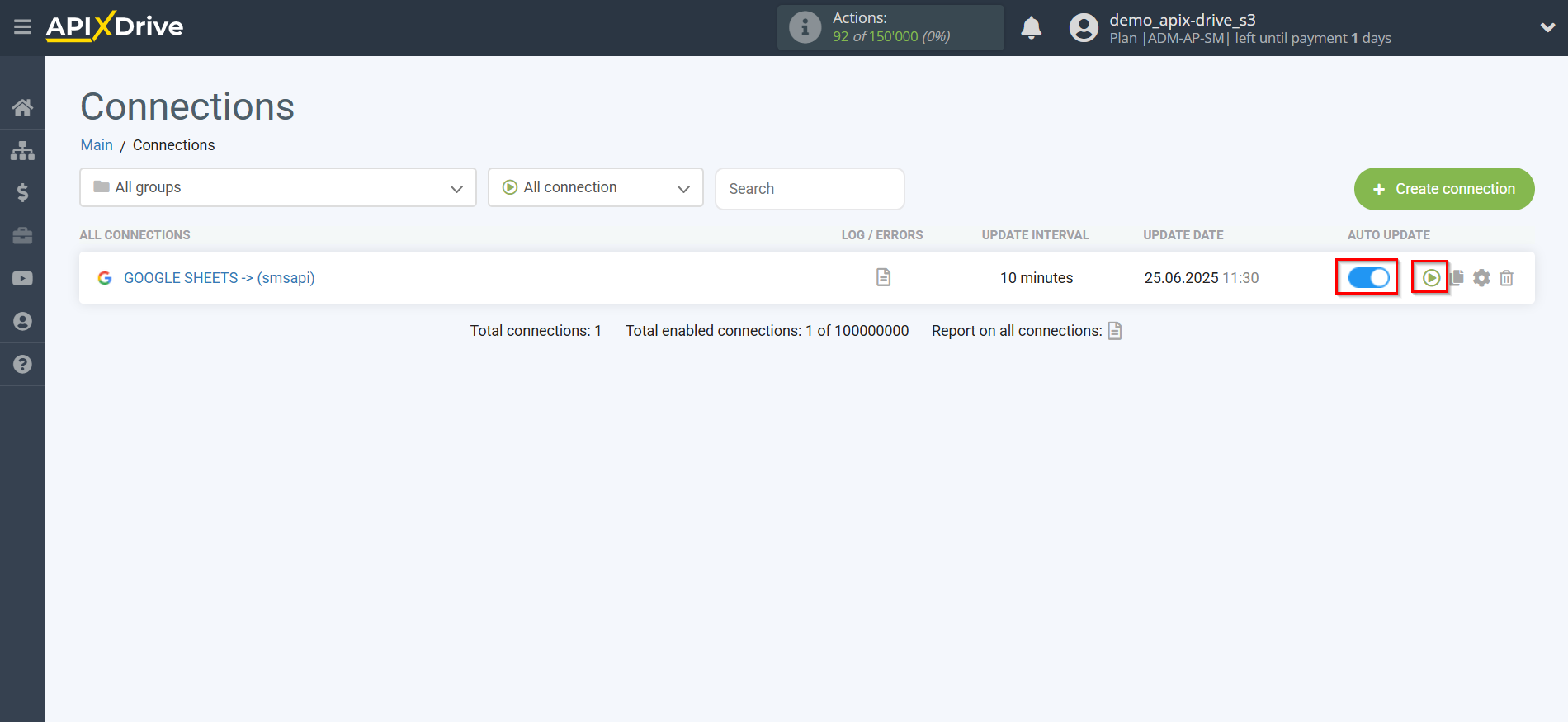
This completes the setup of the SMSAPI Data Destination! See how simple it is!?
Now you don't have to worry, ApiX-Drive will do everything on its own!